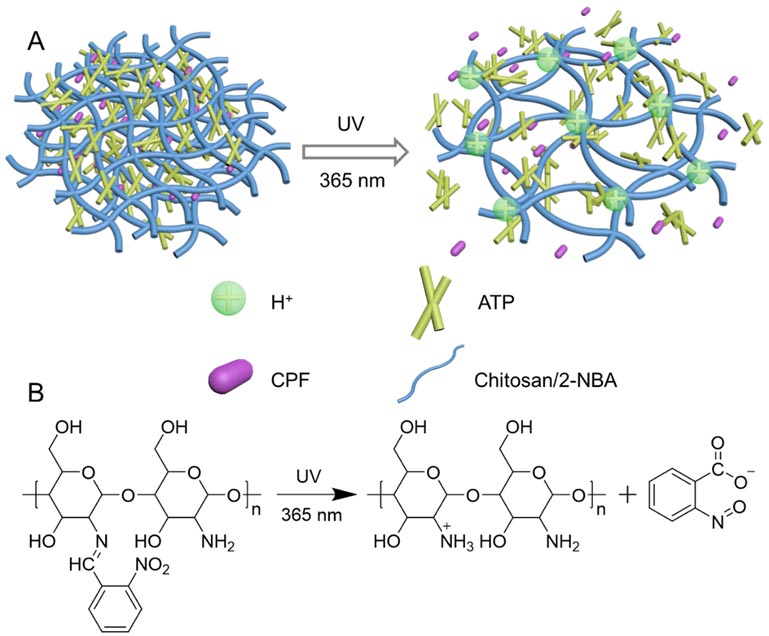
ATP/chitosan/2-NBA/CPF/GA, a novel environmentally responsive pesticide delivery system was successfully developed by a research team led by Prof. WU Zhengyan from Hefei Institutes of Physical Science (HFIPS), Chinese Academy of Sciences (CAS). According to the team, it was able to deliver precise pesticide to plants and enhance utilization efficiency.
This work was published in Pest Management Science.
In this research, 2-nitrobenzaldehyde (2-NBA) was firstly modified on the chains of chitosan, and attapulgite (ATP) was introduced into the chitosan/2-NBA matrix as structural skeleton to augment specific surface area and improve processibility of the polymer. Next, organophosphate insecticide chlorpyrifos (CPF) was sequestered within the dimensionally porous network of ATP/chitosan/2-NBA, followed by being crosslinked with glutaraldehyde (GA) to the fabrication of smart pesticide (ATP/chitosan/2-NBA/CPF/GA) with controlled-release behavior. Upon UV light (365 nm) irradiation, chitosan/2-NBA was decomposed to chitosan and 2-nitrosobenzoic acid, from which amine groups of chitosan was protonated by seizing H+, and the chitosan chains became positively charged, resulting in spatial expansion of the polymer matrix and consequently expediting the release of CPF.
Confined by the volatile property and photoinstability, pesticides are overused and lost significantly during and after spraying, weakening the ecological microbalance among different species of lives. Acid-responsive pesticide is a type of smartly engineered pesticides that contribute to the improvement of utilization efficiency of pesticidal active ingredients in acid-controlled manner, whilst the implementation of acidic solutions may disturb the balance of microenvironment surrounding targeted plants or cause secondary pollution, underscoring the input of acid in a more precise strategy.
This study proposed a new strategy of in situ photo-induced generation of acid locally on the spots of applied pesticide to circumvent the problem of acid contamination to nontargets. In addition, this UV responsive pesticide formulation is expected to combine with the current black light (emitting 365 nm UV light) trapping pest technology in a synergistic effect to achieve more efficient pest management in a field situation.
This research was supported by University Synergy Innovation Program of Anhui Province and the Innovation and Entrepreneurship Fund of Science Island.

Schematic illustration of mechanism. (Image by LIU Bin)